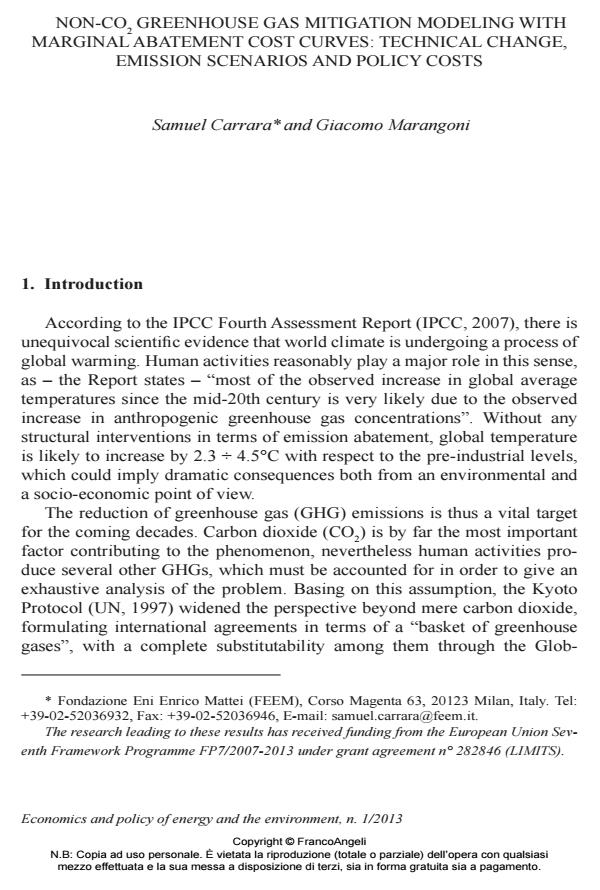Non-CO2 greenhouse gas mitigation modeling with marginal abatement cost curv es: technical change, emission scenarios and policy costs
Titolo Rivista ECONOMICS AND POLICY OF ENERGY AND THE ENVIRONMENT
Autori/Curatori Samuel Carrara, Giacomo Marangoni
Anno di pubblicazione 2013 Fascicolo 2013/1
Lingua Inglese Numero pagine 34 P. 91-124 Dimensione file 871 KB
DOI 10.3280/EFE2013-001006
Il DOI è il codice a barre della proprietà intellettuale: per saperne di più
clicca qui
Qui sotto puoi vedere in anteprima la prima pagina di questo articolo.
Se questo articolo ti interessa, lo puoi acquistare (e scaricare in formato pdf) seguendo le facili indicazioni per acquistare il download credit. Acquista Download Credits per scaricare questo Articolo in formato PDF

FrancoAngeli è membro della Publishers International Linking Association, Inc (PILA)associazione indipendente e non profit per facilitare (attraverso i servizi tecnologici implementati da CrossRef.org) l’accesso degli studiosi ai contenuti digitali nelle pubblicazioni professionali e scientifiche
The abatement of non-CO2 greenhouse gases (OGHG) has proved to be of par- amount importance for reaching global mitigation targets. The modeling of their abatement is normally carried out referring to marginal abatement cost (MAC) curves, which by now represent a standard approach for such an analysis. As no evolution scenarios are available to describe future mitigation opportunities for OGHGs, exogenous technical progress factors (TP) are normally imposed, producing progressive MAC dilatation over time. The main aim of this work is to perform a sensitivity analysis evaluating climate and economic effects of imposing various TPs under different policy scenarios. The analysis shows that TP variation has a considerable impact on the climatic and economic results.
Parole chiave:Environmental economics, non-CO2 greenhouse gases, marginal abatement cost curve, technical change
Jel codes:Q54, Q55
Samuel Carrara, Giacomo Marangoni, Non-CO2 greenhouse gas mitigation modeling with marginal abatement cost curv es: technical change, emission scenarios and policy costs in "ECONOMICS AND POLICY OF ENERGY AND THE ENVIRONMENT" 1/2013, pp 91-124, DOI: 10.3280/EFE2013-001006